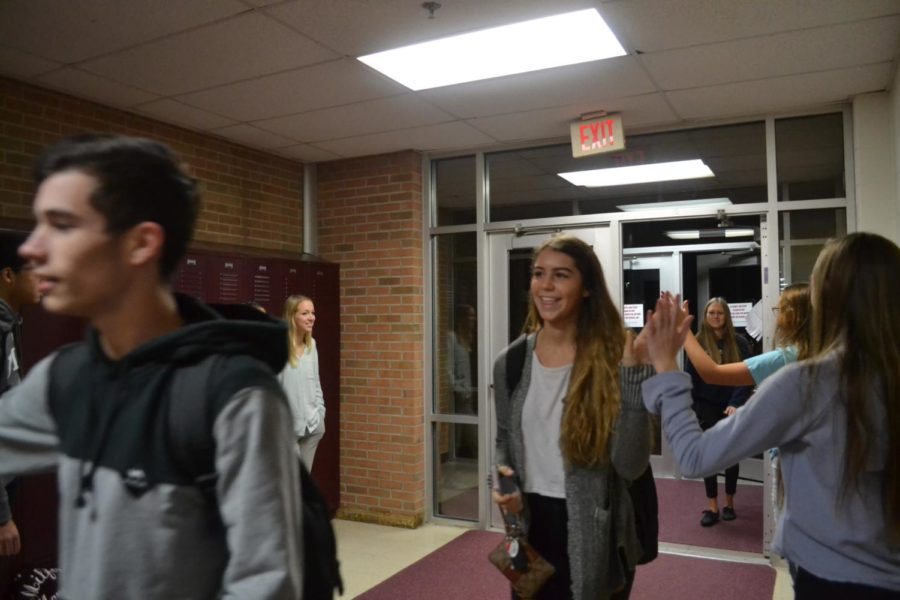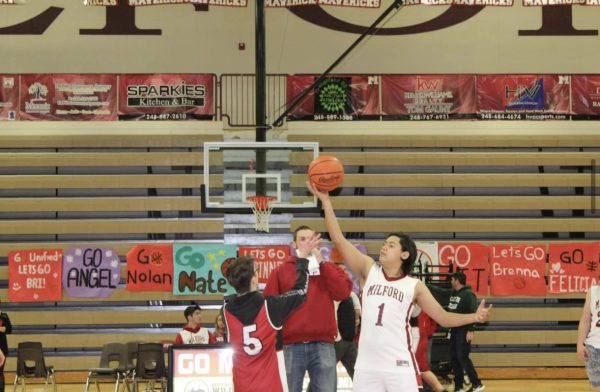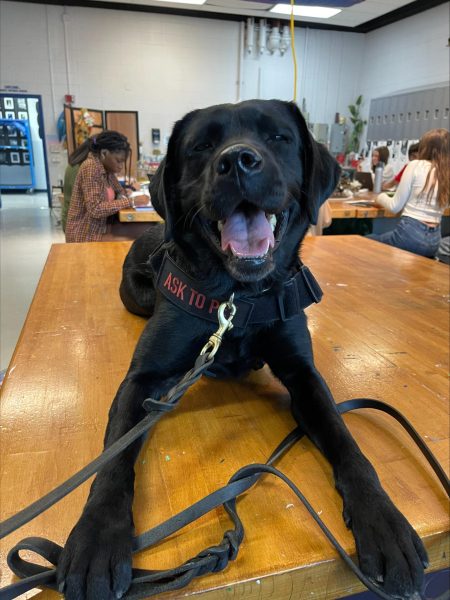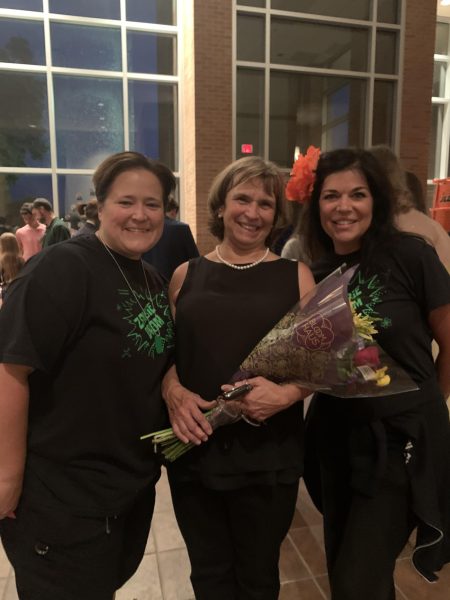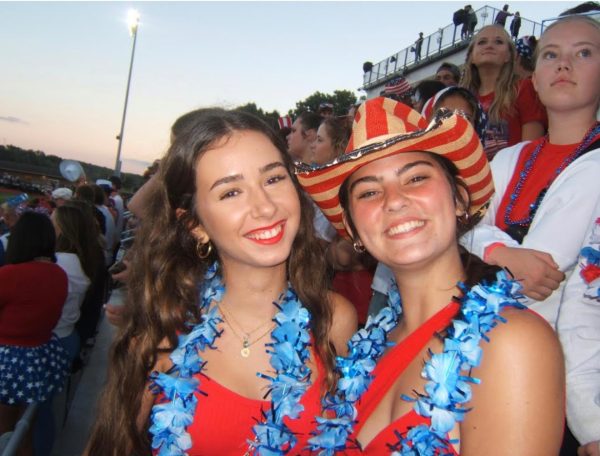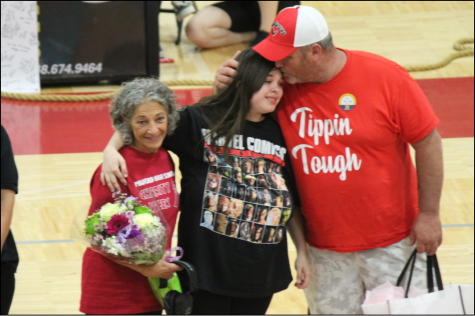Caring Community Week Promotes Happiness at Milford High School
November 29, 2017
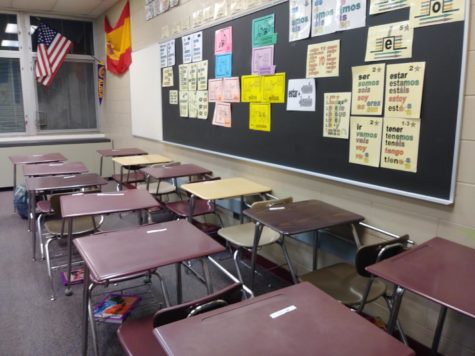
John Goodlad, an educational researcher and theorist who published influential models for renewing schools, once wrote that “Boredom is a disease of epidemic proportions… Why are our schools not places of joy?” in his book: “A Place Called School”. The book was published in 1984, but his claim still rings true to this day, a generation later, in high schools around the world.
Imagine asking a class of high school students to form a list of adjectives that they think are fitting to describe school. It’s likely that “joyful” would make few lists, if any. Students have countless, unique opportunities to discover life and the wonders of learning, yet high schools still manage to lack joy in their environments.
High school students typically spend six to seven hours in school every day for nearly ten months each year. It would be understandably challenging to make a five-day routine exciting, but teens do not necessarily need to be having fun to have a sense of joy while at school.
Monday, October 23 marked the beginning of the fifth annual, Leadership led, “Caring Community Week” at Milford High School (MHS). A committee of nine students in the Leadership class planned simple ways to make MHS students happier –Not the temporary sort of happiness that dissipates over time, but a constant resonance of joyful energy.
To kick off the week the committee, as well as other volunteers from Leadership, arrived at school 45 minutes before the starting bell on Monday morning to place an array of paper slips with varying fonts and inspirational messages on each desk, in every classroom.
Some kids responded to the messages with excitement; others with annoyance. Dave Gilbert, the MHS Leadership teacher, said that when he went to talk to his coworker Dan Reschke, “a student walked in without realizing I was there, and he looked down at his desk and read his note and said ‘oh this is cool; I needed this’.” This student’s response was exactly what Gilbert and the committee had hoped to hear.
On the flip side, another anonymous student said the notes were “meaningless personally, because the leadership students only wanted credit for writing them.”
It’s understandable that one might draw such a conclusion since being a part of a committee is an assignment grade for the Leadership students. But the students who chose to be a part of the committee didn’t sign up because they had to, because they thought it was easier to plan than the other options, or because they wanted to say that they did it. Rather, they genuinely wanted to create a happy environment for a week in October, that would hopefully leave a long lasting impact, and perhaps start new traditions, at Milford High School. Junior committee member Natalie Black said she “wanted to be a part of this committee to include the whole school in something happy, and to have a chance to give back.”
Junior Jenna Carlisle was another student who was outspoken about her appreciation towards the notes. She defended them when a peer was complaining about them, by saying, “I kept a sticky note from last year’s Caring Community Week, that said ‘Be yourself’ in my locker so that every time I opened it, I would feel encouraged.”
Not everyone loved the messages, but the point of making notes for the students was to impact as many people as possible. Gilbert instructed the committee to “focus on the positive responses because as long as one person’s spirit is lifted, it is successful.”
Similarly to Carlisle’s response, this year, senior Shelby Plizga said, “I immediately put the note I received in my phone case so that everyday I remember to be myself,” when describing her reaction to her message that read: “Be a Froot Loop in a world of cheerios.”
The majority of the students, whether they thought the idea was cheesy, impersonal, or considerate, were quick to react when they read the notes. Immediately they struck up conversations with the people around them rather than sitting quietly on their phones. And whether they liked them or not, they were laughing or smiling.
Another new improvement was made to the environment of Milford High School that Monday. Seniors Nic Glazer and Sophia Heika, who are part of a Positivity Project legacy group in Leadership, put a whiteboard up in the center window in the commons with a question written above it asking, “Who are you proud of at MHS?”. Colored expo markers hung below it so that students could come write their responses to the question as they pleased. The whiteboard was filled with names just two hours after being hung up.
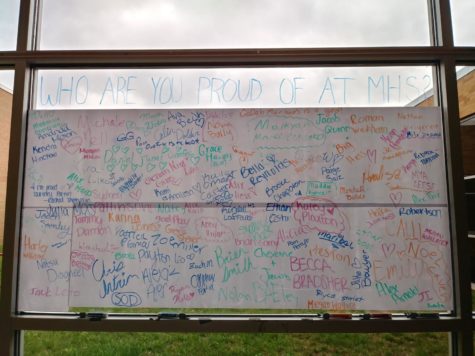
After school the same day, the Caring Community Week committee stayed and went to each of the ten student bathrooms on campus; decorating each one with messages about positive body image on the mirrors, and colorful balloons.
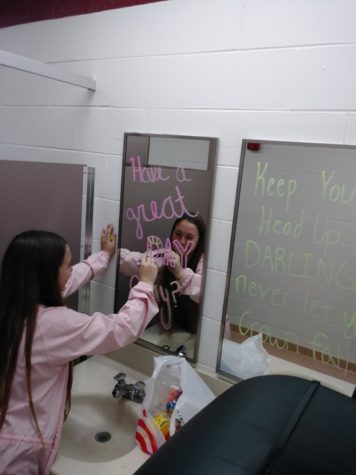
The following day, Tuesday, students and staff flooded social media with pictures in front of the mirrors; extending their celebration of positivity into the community. The words had a double meaning: to make the students happy, and to prevent them from seeing their reflection to encourage them to focus on their mental state rather than their physical state. The committee picked out messages that they thought would best show their peers that they are important and special in their own way, and that they shouldn’t feel like they are less than anyone because of what they see as a flaw.
Wednesday, the committee had a school-wide Google classroom form that each class could fill out in second hour, during a designated time frame. The form had ten quotes listed, and the classes had to identify who was quoted. Lori Gleason’s class won by having the most correct and submitting it the fastest, and received cider mill donuts as a reward.
Wednesday was also National Unity Day so students were encouraged to wear orange to support bullied students, and orange balloons decorated the Commons of the school.
On Thursday the Caring Community Week committee came to school early again to stand in the entrances to high-five and greet students entering the school. The idea to do so originated when Gilbert took students to the Josten’s Renaissance “Find Your Grind Tour” to hear Mike Smith, a motivational speaker, speak. At one point during the event everyone in the audience was given 20 seconds to high-five as many people as possible. Afterwards Smith said that “every single person had a smile on his or her face during those 20 seconds.” Gilbert felt inspired to create a similar joyful moment at MHS.
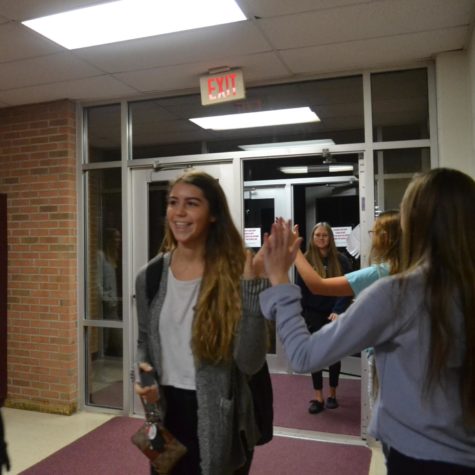
Junior committee member Julia Kenny said this was her favorite part of the week “because it was rewarding to see the smiles on their faces.”
Also on Thursday, students were given an opportunity to sign-up to send “happygrams” (the committee’s term to describe uplifting notes with candy attached to them) to their friends.
The “happygrams” were delivered on Friday during sixth hour. It was a perfect way to end the week because it gave students an opportunity to compliment their peers, more personally than the messages on Monday, whether they chose to remain anonymous or not. Senior committee member Becca Dipiazza described the purpose of the happy grams as “a perfect way to show someone you care about them in a sweet way.”
Milford High School students, faculty, and staff are all hopeful to improve the school’s negative atmosphere permanently, and Caring Community Week was a perfect place to start. The amazing week of outpouring compassion and thoughtfulness made students more aware of their peers’ feelings. Also by valuing and appreciating acts of kindness, the committee inspired more people to do the same.
